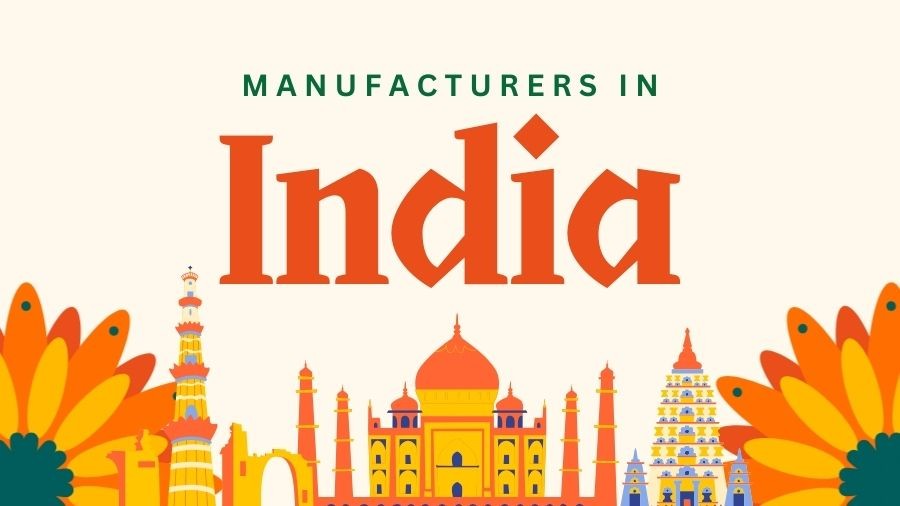The Growing Landscape of Manufacturers in India

India has emerged as a significant hub for manufacturers in recent years. This change is due to various factors that make the country an attractive destination for local and international businesses. The manufacturing landscape is diverse, with numerous sectors contributing to the economy. From textiles to electronics, Indian manufacturers are stepping up to meet global demand.
The Indian manufacturing sector has grown substantially. According to the Ministry of Commerce and Industry, manufacturing contributes around 16 to 17 percent of the country’s GDP. This growth is essential for India's economic development and job creation. It also aligns with government initiatives aimed at boosting manufacturing through programs like "Make in India."
One key component of this growth is the rise of Indian wholesale suppliers. These suppliers play a crucial role in distributing products across various sectors. They connect manufacturers with retailers and businesses, ensuring a steady flow of goods. This network enhances market accessibility, benefiting both producers and consumers.
India is known for its rich diversity in products. Manufacturers are producing everything from garments to machinery. The textile industry, in particular, remains one of the largest.
Top exporters from India have made significant contributions to this growth. They help place Indian goods on the global map. These exporters not only focus on traditional sectors but are also expanding into new areas. For instance, the electronics sector is gaining momentum. India is becoming a key player in electronics manufacturing, with companies like Foxconn establishing operations in the country.
Another important aspect of this manufacturing landscape is the role of Indian trade companies. These companies facilitate international trade by connecting manufacturers with buyers overseas. They provide essential services such as logistics, documentation, and market intelligence. Their expertise allows manufacturers to navigate complex global markets more effectively.
Moreover, the rise of import-export companies in India is transforming trade dynamics. These companies assist in sourcing materials and components necessary for production. They also help manufacturers find international markets for their products. The synergy between manufacturers and these import-export companies fosters growth and innovation.
The government has implemented several policies to support manufacturers. Initiatives like the Production-Linked Incentive (PLI) scheme incentivize companies to boost production. The goal is to make India a manufacturing powerhouse by encouraging investment and job creation. This scheme targets sectors like electronics, pharmaceuticals, and automotive, among others.
Investors are increasingly showing interest in Indian manufacturing. Foreign Direct Investment (FDI) in the manufacturing sector has surged in recent years. According to reports, India received $20 billion in FDI in the manufacturing sector in 2021 alone. This influx of capital is vital for enhancing production capabilities and improving technology.
Digital transformation is another key trend affecting manufacturers in India. The adoption of advanced technologies such as automation and AI is reshaping production processes. Manufacturers are leveraging technology to improve efficiency and reduce costs. This shift enhances competitiveness and meets the evolving demands of consumers.
Sustainability is also becoming a focal point for Indian manufacturers. As global awareness of environmental issues rises, companies are adopting eco-friendly practices. Many manufacturers are exploring sustainable materials and waste reduction techniques. This shift not only addresses consumer concerns but also aligns with international standards.
The Indian manufacturing landscape is not without its challenges. Issues like infrastructure bottlenecks and regulatory hurdles can impede growth. However, the government is actively working to improve infrastructure through initiatives like the National Infrastructure Pipeline. This plan aims to enhance transportation, logistics, and utilities, providing a better environment for manufacturers.
The pandemic has reshaped the manufacturing sector. Disruptions in supply chains exposed vulnerabilities. Manufacturers are now focusing on building more resilient supply chains. Diversification of suppliers and localization of production are becoming common strategies.
Regional disparities in manufacturing capabilities also exist. States like Maharashtra, Tamil Nadu, and Gujarat lead in manufacturing output. These states benefit from better infrastructure and a favorable investment climate. However, other regions are working to catch up by attracting investment and improving local capabilities.
The importance of skill development cannot be overlooked. As manufacturing becomes more technology-driven, the demand for skilled labor is increasing. Collaborations between industry and educational institutions are essential for creating a skilled workforce. This approach ensures that workers are equipped with the necessary skills to meet industry demands.
Networking among manufacturers is crucial for growth. Trade associations and industry bodies play a vital role in facilitating collaboration. These organizations provide platforms for sharing best practices and networking opportunities. By fostering collaboration, manufacturers can collectively address challenges and explore new opportunities.
Previous Story
- Key Strategies to Address Global B2B Supply Chain...
- Best Construction Hardware Suppliers Trends and Insights
- Apple Supplier Foxconn's Q2 Profit Rises 6% Thanks...
- Exploring Market Trends in the Bitumen Supplier Sector
- Insights into Lighting Components Suppliers - Market Trends...
- Sustainable Business-Grade A4 Copy Paper - Market Trends...
- Decoding the Aluminium Ingot Supply Chain - Insights...
- Insights into Global Rice Supplier Industry Trends